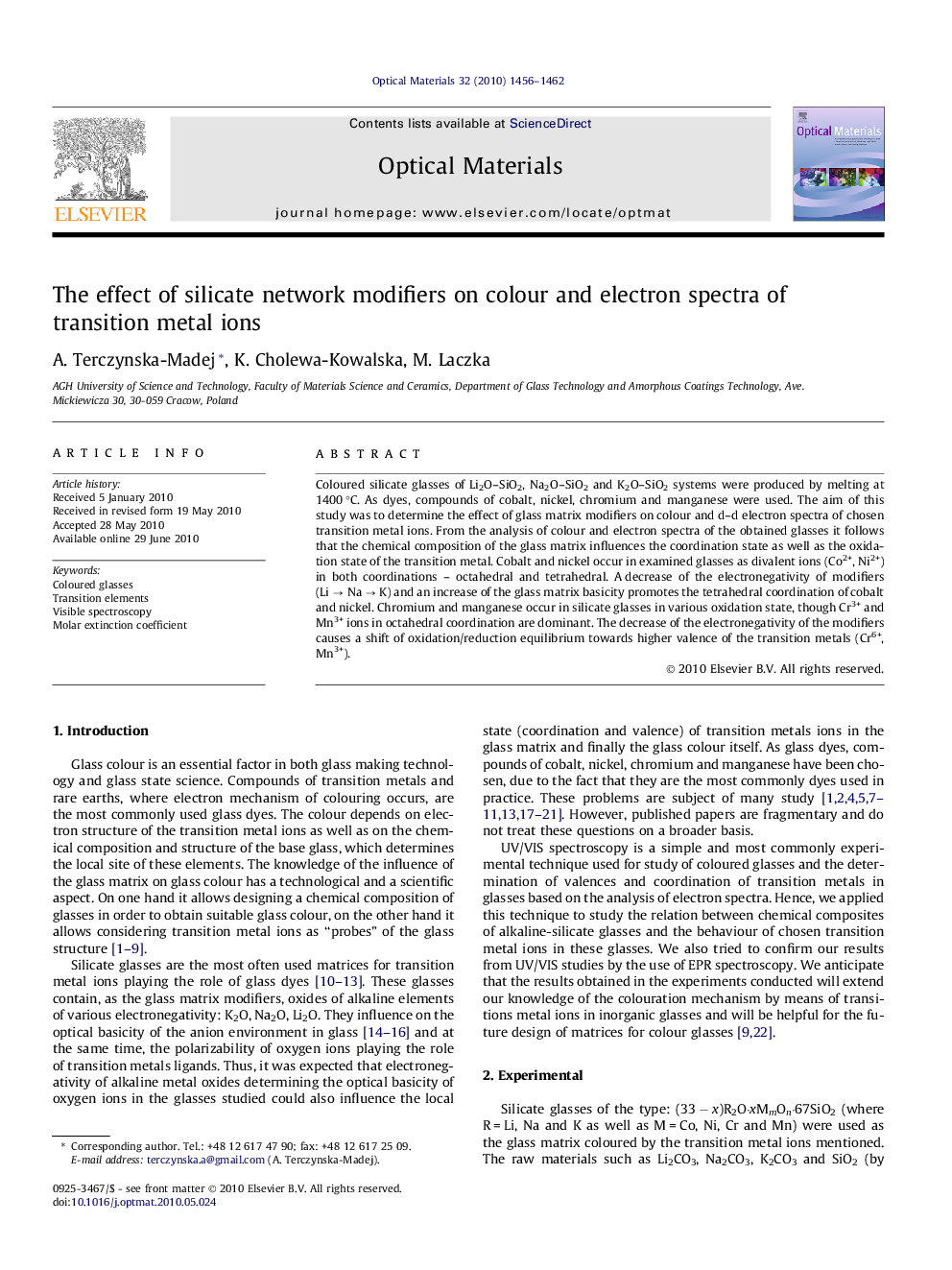| Article ID | Journal | Published Year | Pages | File Type |
|---|---|---|---|---|
| 1496330 | Optical Materials | 2010 | 7 Pages |
Coloured silicate glasses of Li2O–SiO2, Na2O–SiO2 and K2O–SiO2 systems were produced by melting at 1400 °C. As dyes, compounds of cobalt, nickel, chromium and manganese were used. The aim of this study was to determine the effect of glass matrix modifiers on colour and d–d electron spectra of chosen transition metal ions. From the analysis of colour and electron spectra of the obtained glasses it follows that the chemical composition of the glass matrix influences the coordination state as well as the oxidation state of the transition metal. Cobalt and nickel occur in examined glasses as divalent ions (Co2+, Ni2+) in both coordinations – octahedral and tetrahedral. A decrease of the electronegativity of modifiers (Li → Na → K) and an increase of the glass matrix basicity promotes the tetrahedral coordination of cobalt and nickel. Chromium and manganese occur in silicate glasses in various oxidation state, though Cr3+ and Mn3+ ions in octahedral coordination are dominant. The decrease of the electronegativity of the modifiers causes a shift of oxidation/reduction equilibrium towards higher valence of the transition metals (Cr6+, Mn3+).
